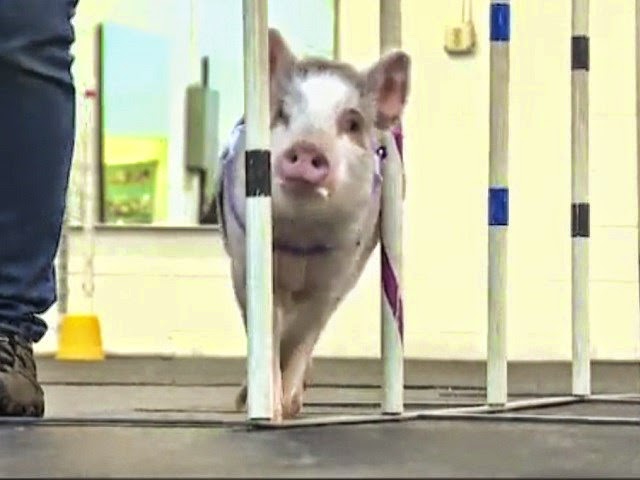Are you the owner of a dog that despises being left
alone? Maybe he eliminates all over the
house when you leave, despite having ample opportunities for potty breaks ahead
of time. Perhaps he chews up furniture,
walls, curtains, or whatever he can get his mouth on. Or maybe he just barks/howls/whines for hours
on end until you return. If this sounds
like your dog, then we may be able to help.
•Cutting the Umbilical
Chord - A dog with separation anxiety needs to learn how to cope without
you around. The easiest way for him to
learn how to do this is by allowing him to engage in fun activities without you
there. Ideally, if he is distracted and
happy, he will forget that your presence is lacking. This will increase his confidence in his
ability to navigate the world around him without his "safety net"
(you). Eventually he will gain
confidence and the recognition that you always return for him. Ideally, this newfound confidence will translate
when he is home alone as well. This will
not happen overnight. But with
repetition and consistency, any dog (even an old one) can learn new behaviors.
For a dog (or child for that matter) the ability to
confidently separate from his "parent" is an important life
skill. It’s also a good idea for dogs in
multi-dog households to practice staying home alone or going places without the
other dog to prevent issues if the two dogs ever do need to be separated - for
a Vet appointment or a grooming visit for example.
•Socialization -
A well-socialized dog is far less likely to be anxious. A dog that's able to build bonds with other
dogs as well as people other than just his owner will be a much more confident
and content dog. An experienced daycare
staff will give an anxious dog ample opportunity for supervised interactions
that will be positive and beneficial.
•Exercise is
important for all dogs but it's especially helpful in minimizing the effects of
a dog with separation anxiety. An
anxious dog lacking exercise can wreak havoc on his owner’s home, bother
neighbors, or even hard himself. A
tired dog is less likely to notice or care if left alone, mostly because he
will just want to catch up on his sleep (most dogs sleep on average about 14
hours per day so extra sleep after a day of activity or excitement should not
be cause for alarm).
•Preparation for Boarding
- If you ever plan to travel without your dog, you will want to feel confident
that he/she will not became completely overwrought while you are away for an
extended period. Spending time at a doggie daycare that also offers boarding
allows your dog to get comfortable with the caregivers and the location. For a particularly anxious dog, having a
“home away from home” can be a veritable lifesaver for him as well as his
owners.
To find out if doggy daycare in Beverly may be right for
your dog, please contact us!
*Please note, some dogs lash out aggressively due to fear
and/or anxiety; if this is the case for your dog then daycare would not be an
appropriate setting for him. For fearful
dogs exhibiting aggressive behavior towards humans or other dogs we would
recommend consulting with a professional behaviorist and/or trainer.





